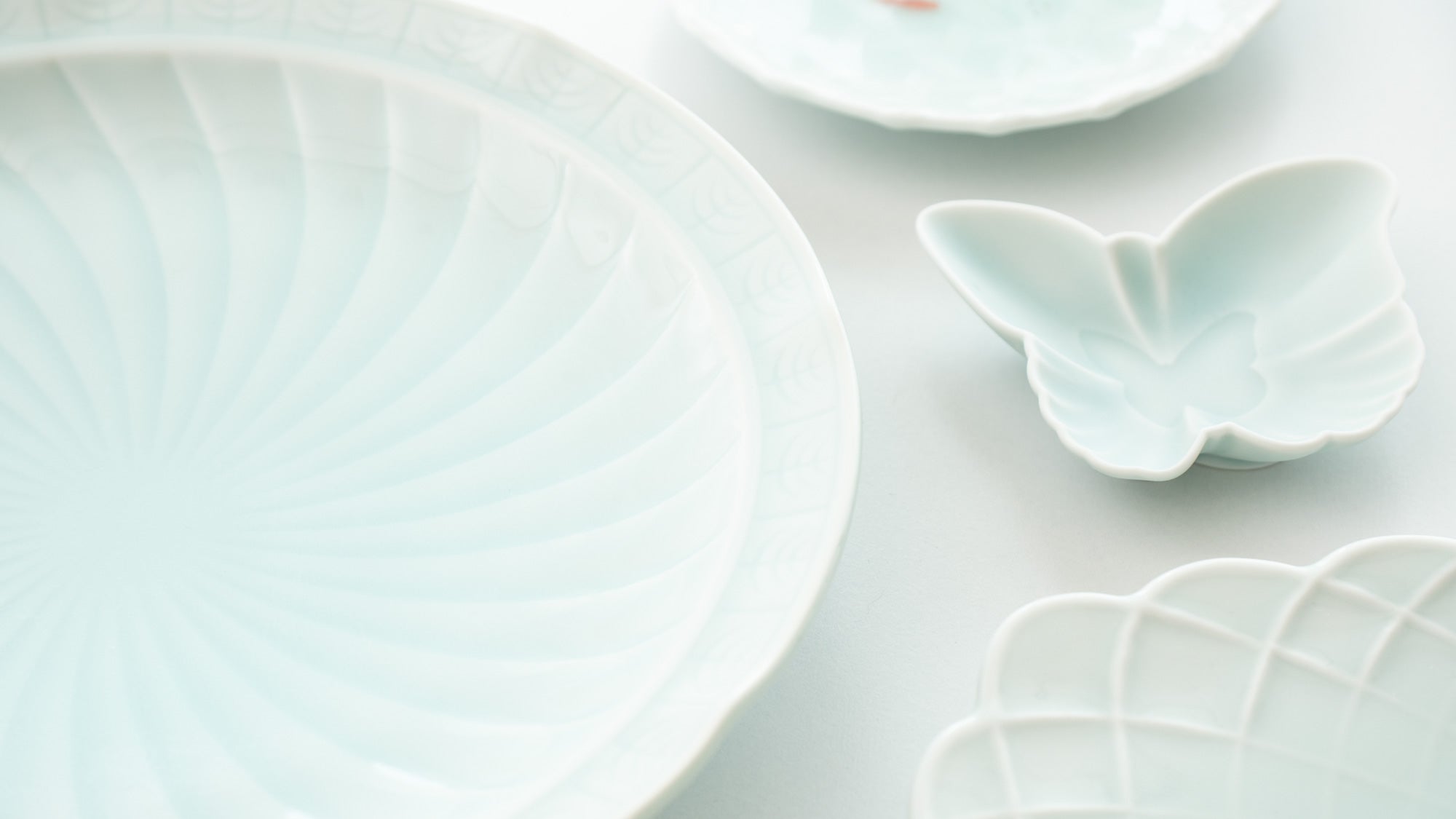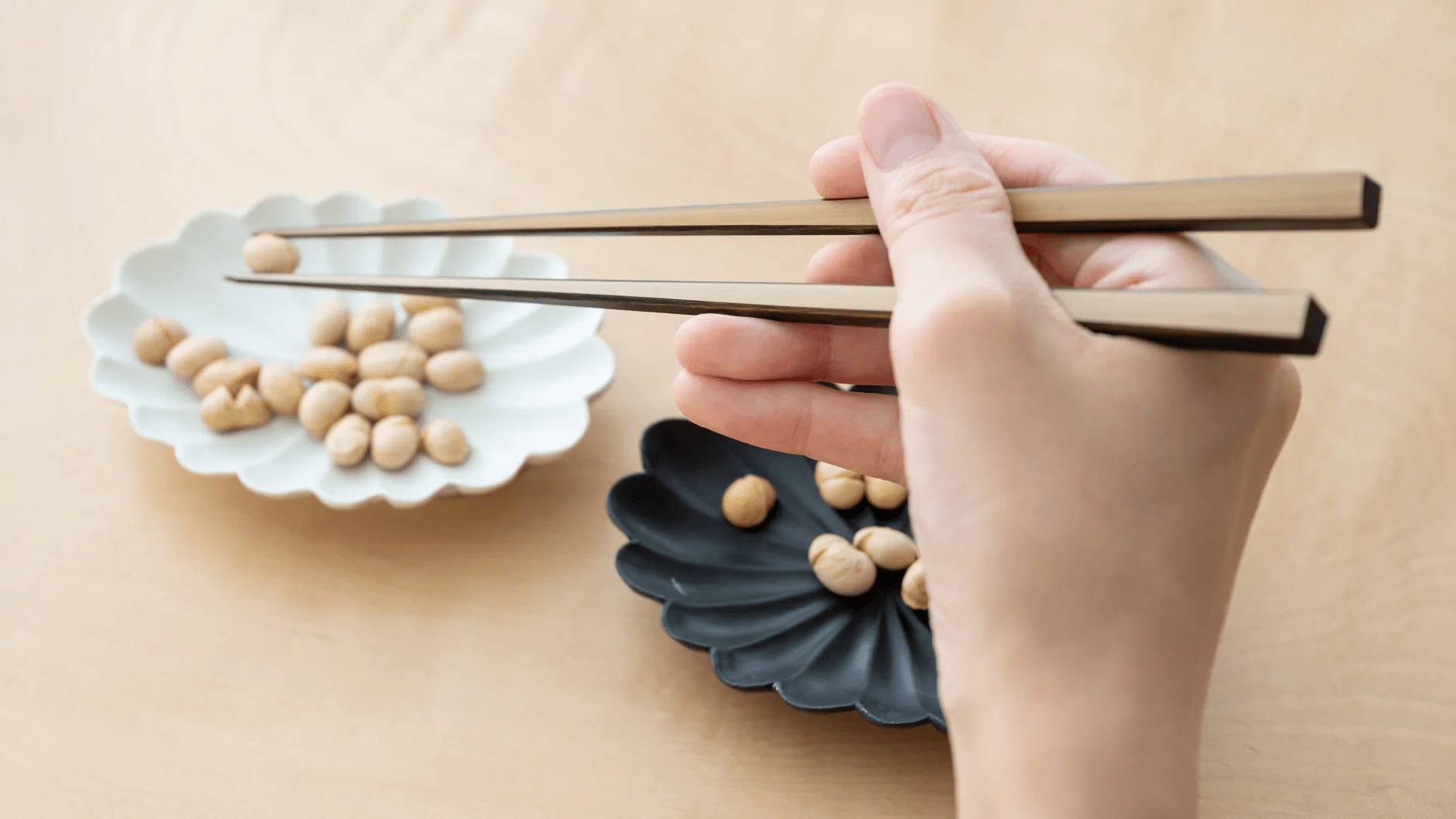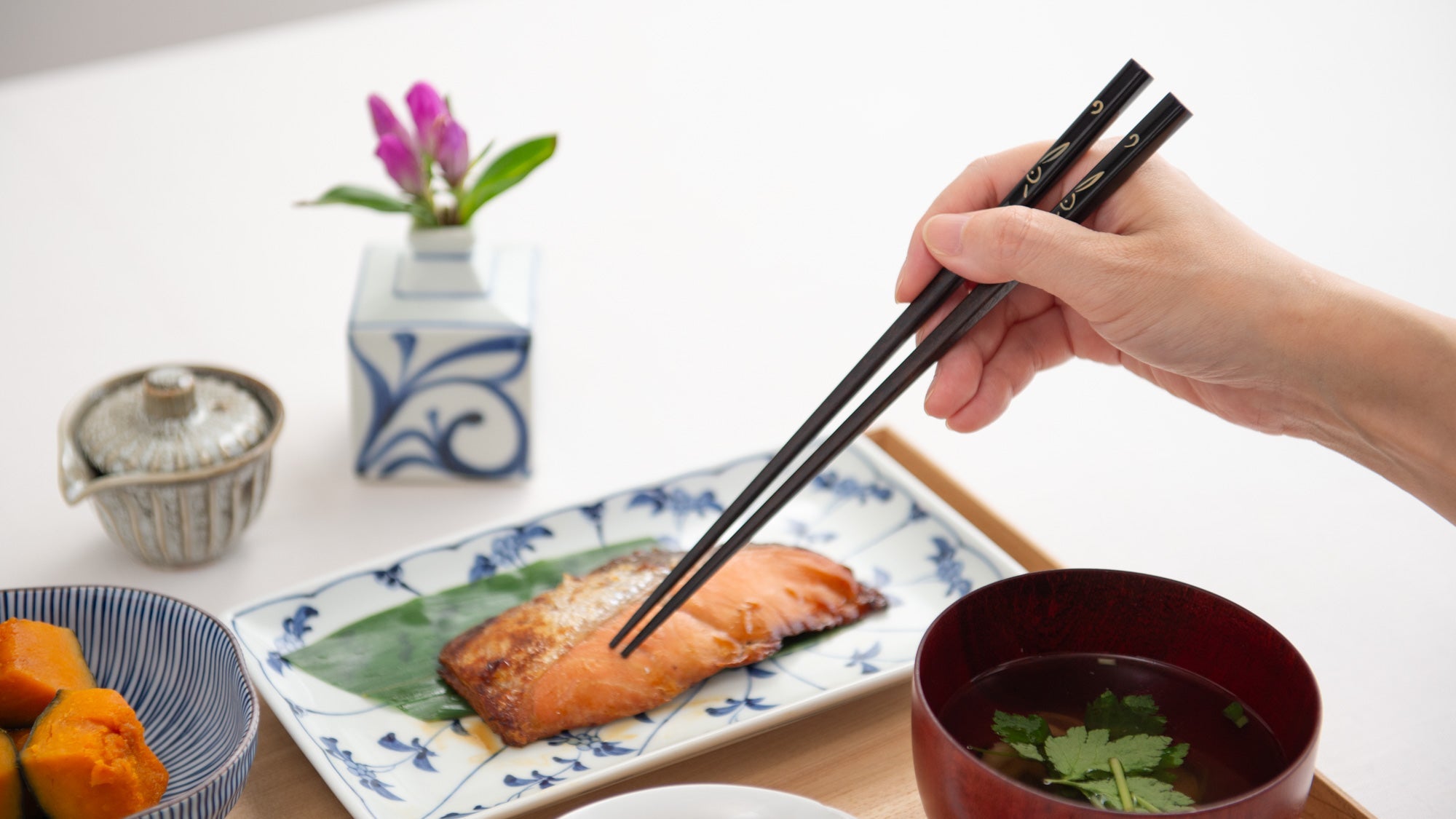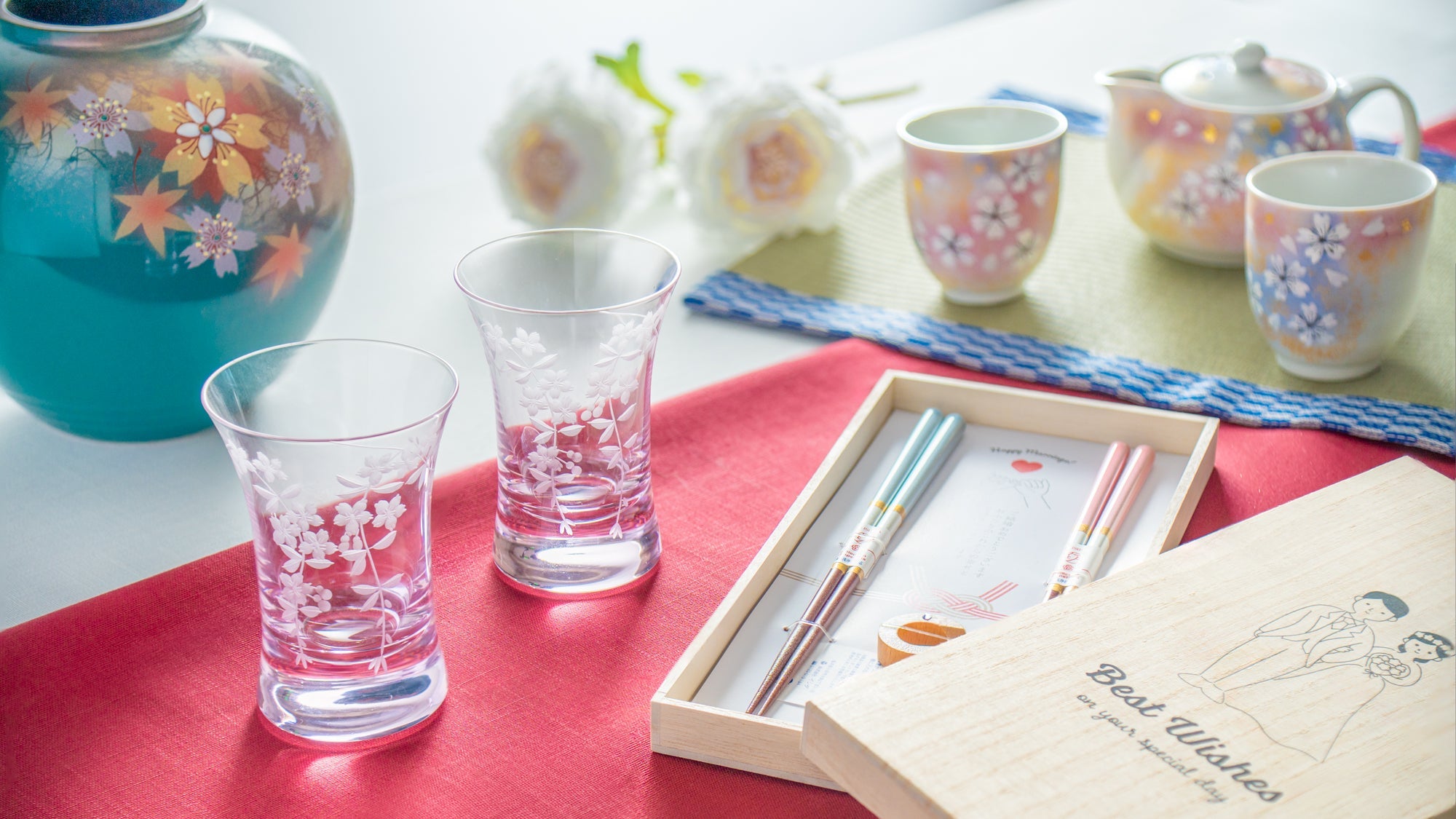
Timeless Treasures: Japan's Love of Celadon Porcelain Throughout the Years
Written by Team MUSUBI
Celadon porcelain originated in China and was introduced to Japan by the 10th century. Among the aristocratic classes at that time, celadon wares from China were regarded as the finest imported goods. They adored its mysterious blue and named it "secret-color."
Production of celadon ware began in the Hizen region, the northwestern part of present-day Kyushu in the early Edo period (1603 CE–1868 CE), and the technique was later transmitted to Kyoto and nearby areas. In 1957, the craft technology was designated a national intangible cultural asset. Celadon porcelain is still loved and worked on by many potters and artists today.
tables of contents
History of Celadon Porcelain

Chinese Celadon and Japan
Chinese celadon porcelain had already been introduced to Japan by the Heian period (794 CE–1192 CE). It gained immense popularity among the aristocratic classes in Kyoto because of its enigmatic color. Particularly, celadon porcelain produced in southern China was highly valued and known as a luxury item. Its pale blue-green color was referred to as hisoku "secret color."
According to a literary work of the time, in a dining setting of a noble family, the son and daughter used gold cups, while the family head used cups made of celadon porcelain. Chinese celadon porcelain was considered more valuable than gold.
Hizen Province and the Celadon
In the early 17th century, celadon porcelain was first produced in Hizen Province, present-day Saga and Nagasaki Prefectures in northern Kyushu. Hizen Province was the birthplace of many types of Japanese porcelain, including Imari, Arita, Nabeshima, and Hasami. Potters from China and Korea made a tremendous contribution to its development.
Although little is known about celadon production at that time, the first porcelain produced by the Nabeshima clan's kiln is said to be celadon porcelain. According to findings published by a journalist in 1921, the potter of the first celadon porcelain in Japan was said to be a Korean man who adopted the Japanese name, Takahara Goroshichi. Takahara had been brought to Japan to serve Toyotomi Hideyoshi—Japan's unifier at the end of the 16th century.
Some Imari Nabeshima ware celadon potteries have continued the tradition, and their beauty is still highly regarded today.
The production of Hasami ware is believed to have started around 1600, later than other areas in western Hizen. Initially, only pottery such as bowls, plates, jars, and urns were produced. Later, three kilns, reportedly involving Korean potters, succeeded in producing the first porcelain in the 1610s to 1620s.
With the discovery of porcelain stone in Mitsunomata, full-scale porcelain kilns were established in Hasami Mitsunomata in the 1630s, particularly boosting the production of celadon porcelain. Hasami's celadon is estimated to have been produced until the early 17th century.
Sanda Celadon
Consequently, the technique of making celadon porcelain was passed onto Kyoto, Sanda in present-day Hyogo Prefecture, and Suzumaru in Wakayama Prefecture, among others. In the late Edo Period (1603 CE–1868 CE), a kiln dedicated to celadon porcelain was set up within the Wakayama Castle grounds. Among these, Sanda celadon porcelain was highly regarded throughout the country for a period during the late Edo period. It is said to have been perfected under the guidance of a well-known potter from Kyoto, Kinkodo Kamesuke. The Sanda Kiln had been in decline since the early Showa period (1926 CE–1989 CE), but in recent years, new artists have revived the tradition.
Fascinated by Celadon Porcelain

Tokugawa Harutomi, the Lord of Wakayama in the late Edo period, ordered his potters to make porcelain in grass green. Very pleased with the coloring, Harutomi named the celadon porcelain "Zuishi ware" after the green color of fresh grass, and embarked on full production at a kiln he built on castle grounds. Both the Chinese emperor and Harutomi must have known how difficult it was to achieve the desired celadon color while making such demands.
Celadon as a color refers to a jade-like shade, while celadon porcelain can vary from pale blue and green to pale yellow.
Celadon glazes are made from a mixture of ash and clay stone. The coloring depends on the amount of iron in the glaze and the base clay, as well as the firing temperature. When fired at high temperatures, the glaze develops a pale blue or green coloring. Its oxidized form is a pale yellow.Moreover, the color of celadon porcelain also depends on the thickness of the glaze. The thicker the glaze, the darker the color. The celadon glaze is several times thicker than, for example, that of blue and white sometsuke porcelain. The smooth feel, similar to glassware, is also due to the thickness of the glaze.
Kannyu is a decorative technique in which fine cracks are produced on celadon porcelain's surface. Just-fired celadon porcelain may make a faint popping sound when cracking, allowing you to watch the pattern slowly spread. If a kannyu celadon porcelain mug is used for coffee or tea, it’s very likely that the inside of the mug will stain. Throughout Asia, where celadon porcelain is especially beloved, people see these stains as tasteful and refined.
Bearers of Celadon Porcelain Today
Hataman Touen

Hataman Touen in Imari City, Saga Prefecture, is located in the Okawachi mountains, where high-quality celadon glaze stone has long been mined. Celadon porcelain has been one of their main products since the 1960s. The kiln owner at the time had a strong passion for celadon porcelain and insisted that it become widely known.
Hataman's celadon porcelain is characterized by its pale blue color, reminiscent of misty mornings in the Okawachi mountains. The kiln pursued new techniques in making celadon porcelain, such as kakewake, where a blue celadon-glazed pattern emerges on white-glazed porcelain. It also produced the Moist series, a matte-textured series with a sandblasted finish.
Nabeshima Kosen Kiln

Kosen Kiln's ancestors were commissioned to produce celadon porcelain and paint at the Nabeshima domain kiln workshop for many generations. The present generation has devoted itself to researching the modernization of celadon firing, and as a result, has produced excellent Nabeshima celadon porcelain that is no less impressive than that of the domain kilns of the Edo period.
In the Medaka Rice Fish series, the jade-like hue of these celadon pieces is undeniably captivating. Through its transparent texture, one can imagine being encompassed by the tranquil image of a glistening body of water. Adorning the surface of the plate are medaka rice fish, depicted with such realism that they look as though they are actually suspended in water.
Soryu Kiln

Soryu Kiln and its gallery, located in Higashiyama, Kyoto, is run by Wanami Soryu the Fourth and his wife Wanami Madoka. Wanami Soryu the First inherited techniques from Suwa Sozan the First—a master of Kyo ware celadon porcelain in the Meiji and Taisho periods (1868 CE–1926 CE). For generations, they have preserved their unique celadon colors.
Their signature style is the blend of turquoise color of celadon glaze, with the heartwarming handcraft of chattering of geometric patterns by a technique called tobikanna. The turquoise glare is achieved through the meticulous process of kneading the kiln’s house blended pigment and seed of celadon into the clay. Inspired by the shade of clear sky after rain, the celadon illuminates into a unique heartwarming blue once fired in the kiln.
Kaizan Kiln

Since its establishment in the early 1950s, Kaizan Kiln has been crafting professional-grade tableware for use in distinguished restaurants and prestigious accommodation facilities. While preserving the traditions of Arita ware, they have continued to innovate and develop new products that resonate with contemporary tastes and lifestyles.
The kiln’s celadon ware stands out for its subtle, refined colors that elevate the aesthetics of meal presentations. Ideal for harmonizing with Japanese cuisine, these items add a sophisticated touch to any table setting, functioning beautifully as serveware. The exquisite variation in aquamarine shades not only enhances the visual appeal but also makes each item an impeccable choice for hosting guests.
Zuihou Itou (Sanda Celadon Porcelain)

Itou Zuihou is a celadon porcelain potter specializing in Sanda ware from Sanda City, Hyogo Prefecture. While creating his works, he also engages in restoring old Sanda celadon porcelain from the Edo period. Although he doesn't come from a long line of potters, he is deeply steeped in tradition in his own way—inspired by the blues of nature, such as the sea and sky. According to Zuihou, depending on the type of glaze and firing conditions, celadon produces more than a hundred kinds of blue.
Celadon Continues to Fascinate People

Celadon porcelain has been cherished for its elegance and simple, sophisticated beauty by everyone from ancient emperors to modern-day citizens. For artists and potters, celadon has served as an attractive glaze for expressing individuality, leading to various studies and technical refinements. Its timeless appeal will continue to be passed down through generations, playing a crucial role in preserving the aesthetics of celadon color for the future.








Leave a comment
This site is protected by hCaptcha and the hCaptcha Privacy Policy and Terms of Service apply.